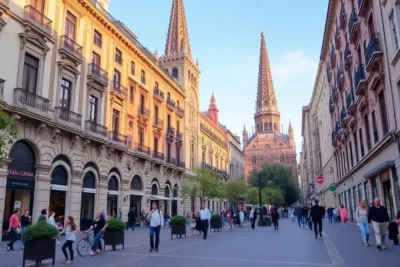
The Sagrada Familia, an iconic symbol of Barcelona, captivates millions of visitors each year with its unique architectural style and intricate details. Designed by the renowned architect Antoni Gaudí, this basilica stands as a testament to his visionary genius and deep religious inspiration.
Despite being under construction for over a century, the grandeur of The Sagrada Familia: 🌟 Large unfinished basilica in Barcelona by Antoni Gaudí! 🇪🇸 continues to inspire awe. Its blend of Gothic and Art Nouveau elements creates a breathtaking experience, making it a must-see landmark for anyone exploring this vibrant city.
The Architectural Marvel of Antoni Gaudí: Exploring the Sagrada Familia
The architectural marvel of Antoni Gaudí, the Sagrada Familia, is a stunning blend of creativity and spirituality. Its intricate facades are adorned with detailed sculptures that narrate biblical stories, making each section a chapter of its own. Visitors are often mesmerized by the play of light through its colorful stained glass windows, which not only enhance the beauty of the interior but also symbolize the divine.
Gaudí's innovative use of geometry and organic forms is evident throughout the basilica. The structure features a unique system of hyperboloids, parabolas, and helicoids that contribute to its distinctive silhouette. This approach not only enhances the aesthetic appeal but also reinforces the building's stability, showcasing Gaudí's understanding of both art and engineering. Key architectural elements include:
- Nature-inspired columns resembling trees, which branch out to support the ceiling.
- Three grand facades: the Nativity, Passion, and Glory, each depicting different aspects of Christ’s life.
- Symbolic towers representing the twelve apostles, the Virgin Mary, and Jesus Christ himself.
Moreover, the Sagrada Familia is not just a masterpiece of architecture but also a cultural icon that reflects the spirit of Barcelona. Its ongoing construction, fueled by private donations, symbolizes continuous faith and dedication. The anticipated completion date, projected for the centenary of Gaudí's death in 2026, adds a layer of historical significance, making each visit a part of a larger narrative about progress and devotion.
Visitors to the Sagrada Familia can appreciate Gaudí’s genius through guided tours that explain the intricate designs and the symbolism embedded in every corner. The basilica’s unmatched beauty and profound meaning make it a cornerstone of not only architectural heritage but also spiritual enlightenment, inviting all to explore its depths and marvel at the vision of one of the greatest architects of all time.
A Journey Through Time: The History Behind the Sagrada Familia
The history of the Sagrada Familia is as intricate as its design, beginning in 1882 when construction commenced under architect Francisco de Paula del Villar. Gaudí took over the project in 1883, transforming its initial Gothic style into a unique vision that combined elements of both Gothic and Art Nouveau. His dedication to the basilica led him to devote the last 15 years of his life entirely to this monumental project, which he envisioned as a "cathedral of nature."
Over the years, the Sagrada Familia has faced numerous challenges, including the Spanish Civil War, which halted construction and resulted in significant damage. Despite these setbacks, work resumed and evolved, reflecting modern techniques while remaining faithful to Gaudí's original plans. The basilica's construction is a testament to the enduring spirit of its creators and the communities that support it, with funding primarily sourced from private donations.
As of 2023, the anticipated completion date is set for 2026, marking the centenary of Gaudí's death. This timeline has become symbolic, representing a blend of historical reverence and modern ambition. The ongoing work has revealed new techniques and materials, ensuring that while the Sagrada Familia continues to be a work in progress, it stands as a monument to innovation and continuity in architecture.
The Sagrada Familia's rich history not only enhances its architectural significance but also cements its status as a cultural treasure in Barcelona. Each visit allows guests to witness a living project that honors the past while looking towards the future, creating a profound connection between the building and the generations that contribute to its legacy.
Symbolism in the Sagrada Familia: Understanding Gaudí's Vision
The Sagrada Familia is imbued with symbolism that reflects Antoni Gaudí's deep spiritual beliefs and understanding of nature. Each element of the basilica is designed to convey a message, creating a harmonious link between the divine and the natural world. This profound vision can be seen in the following aspects:
- Light: The play of light within the basilica symbolizes the presence of the Holy Spirit, illuminating the spiritual journey of visitors.
- Nature: Gaudí's inspiration from natural forms emphasizes the connection between God and creation, with structures resembling trees and organic shapes.
- Numbers: The use of specific numbers, such as 3, 12, and 27, is prevalent in the design, representing the Holy Trinity, the apostles, and divine order.
Another significant aspect of the Sagrada Familia's symbolism lies in its three grand facades: the Nativity, Passion, and Glory. Each facade not only narrates a part of Christ's life but also serves as a visual representation of theological concepts. The Nativity facade, with its intricate sculptures, embodies joy and the incarnation of Christ, while the Passion facade starkly depicts suffering and sacrifice. The Glory facade aims to illustrate resurrection and the divine glory of God.
Moreover, the basilica's towers are intentionally designed to symbolize various biblical figures, including the Virgin Mary, the apostles, and Jesus Christ. This vertical arrangement draws the eye upward, inspiring a sense of aspiration towards the heavens. Through these symbolic elements, Gaudí's vision invites visitors to reflect on their spirituality and the broader narratives of faith that the Sagrada Familia embodies.
In essence, the Sagrada Familia stands not only as an architectural wonder but also as a profound expression of Gaudí's spiritual philosophy. The interplay of symbolism throughout the basilica fosters a deeper understanding of the interconnections between art, architecture, and the divine, allowing visitors to engage with the spiritual essence that permeates this unique landmark.
Construction Challenges: Why the Sagrada Familia Remains Unfinished
The construction of the Sagrada Familia has been fraught with numerous challenges that have contributed to its status as an unfinished masterpiece. One of the significant hurdles includes the complex design itself, which combines intricate details with grand dimensions. The innovative architectural techniques employed by Antoni Gaudí require skilled craftsmanship and precision, making it a time-consuming process that has stretched over generations.
Moreover, political and economic factors have played a crucial role in the delays of the basilica's completion. The Spanish Civil War (1936-1939) caused a halt in construction and led to the destruction of many of Gaudí's original models and plans. Despite these setbacks, the project has remained a labor of love, primarily funded by private donations, reflecting the enduring dedication of both artisans and supporters committed to bringing Gaudí's vision to life.
Technological advancements have also introduced both opportunities and challenges in the ongoing construction. Modern equipment and techniques have allowed builders to tackle previously difficult aspects of the design, yet they must meticulously adhere to Gaudí's original intentions. This balancing act between innovation and tradition is pivotal, ensuring that each new section aligns with the artistic and spiritual essence of the basilica.
Looking ahead, the anticipated completion date in 2026, marking the centenary of Gaudí's death, adds a layer of urgency and excitement to the project. As construction continues, the Sagrada Familia remains a dynamic site, showcasing not only the evolution of architectural practices but also the unwavering spirit of those who strive to finish what began over a century ago. The Sagrada Familia stands as a testament to the harmony of art, faith, and perseverance, inviting future generations to witness its grand completion.
Visiting the Sagrada Familia: Tips for an Unforgettable Experience
Visiting the Sagrada Familia is a captivating experience, and planning ahead can enhance your visit significantly. Book your tickets online to avoid long queues, especially during peak tourist seasons. Early morning or late afternoon visits are usually less crowded, allowing for a more serene exploration of this architectural wonder. Don't forget to allocate time to appreciate the detailed facades and the stunning interior, as each corner tells a unique story.
Consider joining a guided tour to gain deeper insights into Gaudí's vision and the basilica's symbolism. Knowledgeable guides can point out intricate details that you might miss on your own, enriching your understanding of both the art and the artist. Additionally, audio guides are available for those who prefer a self-paced experience while still learning about the Sagrada Familia's history and architecture.
To fully immerse yourself in the atmosphere, take some time to stroll around the surrounding area. The neighborhood offers beautiful parks and viewpoints where you can capture stunning photos of the basilica from different angles. Additionally, keep an eye out for local artisans selling crafts that reflect the spirit of Barcelona, making your visit not just about the Sagrada Familia, but an exploration of the city's vibrant culture.
Lastly, remember that the Sagrada Familia is a working church, so dress respectfully when visiting. Check for any scheduled services that may affect your visit. By being mindful of these details, you can ensure that your experience at one of the world’s most extraordinary landmarks is truly unforgettable.
The Cultural Significance of the Sagrada Familia in Barcelona
The Sagrada Familia's cultural significance extends beyond its architectural beauty; it serves as a symbol of identity for the people of Barcelona. The basilica embodies the spirit of Catalonia, reflecting the region's rich history and artistic heritage. As a UNESCO World Heritage Site, it stands as a testament to the cultural vitality of the city, attracting millions of visitors who come to appreciate not only its stunning design but also its profound narrative of faith and creativity.
This iconic basilica is a source of inspiration for numerous artists, architects, and spiritual seekers alike. Its influence can be observed in various forms of art, including literature, music, and visual arts, where creators draw from Gaudí's unique vision and commitment to spirituality. The Sagrada Familia has become a focal point for cultural events, exhibitions, and community gatherings, further cementing its role in the social fabric of Barcelona.
Additionally, the basilica represents a continuation of craftsmanship and a commitment to traditional building techniques. Generations of artisans and craftsmen have dedicated their skills to the ongoing construction, ensuring that the final product aligns with Gaudí's original intentions. This dedication not only preserves the artistic integrity of the Sagrada Familia but also fosters a sense of community and collaboration among those involved in its completion.
As the Sagrada Familia approaches its projected completion in 2026, it will not only mark a significant milestone in architectural history but also serve as a reminder of the power of faith and perseverance. Visitors will continue to witness the evolution of this masterpiece, which remains a living symbol of hope, creativity, and the enduring spirit of Barcelona.
En este contexto, te invitamos a ver el siguiente video que explora en profundidad la Sagrada Familia, la impresionante basílica inacabada de Barcelona diseñada por Antoni Gaudí.

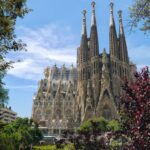 The Sagrada Familia: 🏰🇪🇸 Antoni Gaudí's Masterpiece
The Sagrada Familia: 🏰🇪🇸 Antoni Gaudí's Masterpiece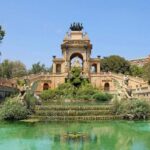 Discover the Best Free Attractions in Barcelona
Discover the Best Free Attractions in BarcelonaIf you want to know other articles similar to The Sagrada Familia: 🌟 Large unfinished basilica in Barcelona by Antoni Gaudí! 🇪🇸 you can visit the category WHERE YOU CAN GO FOR FREE.
Leave a Reply

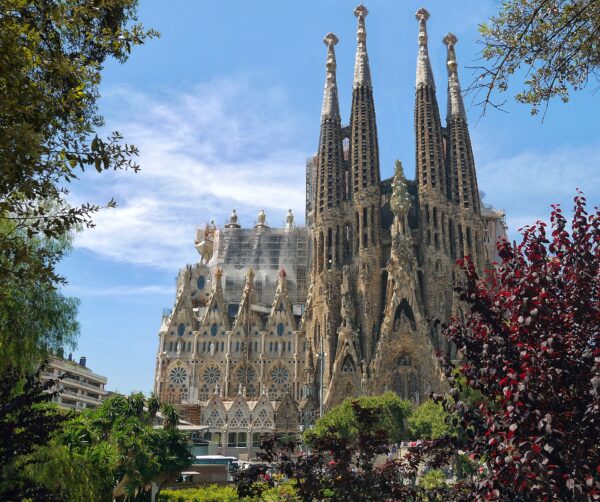
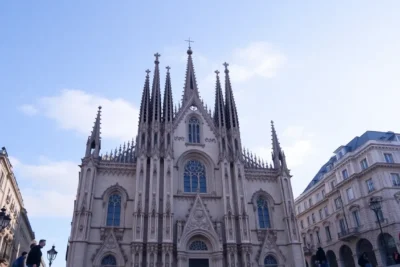
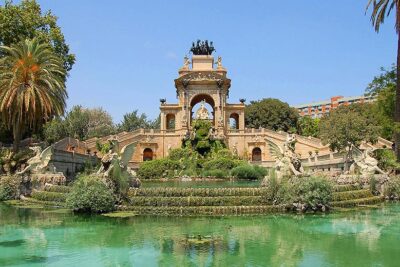
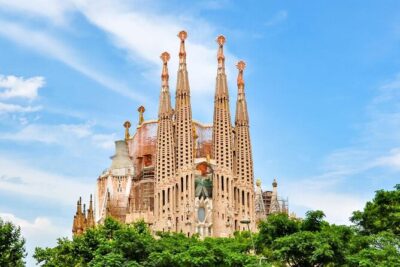
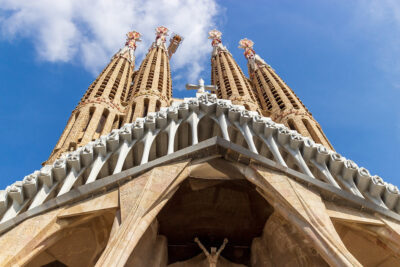
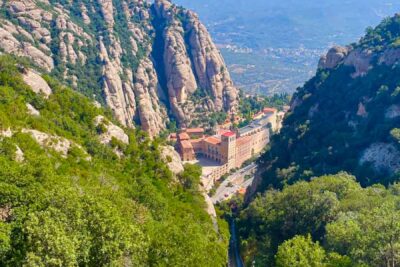
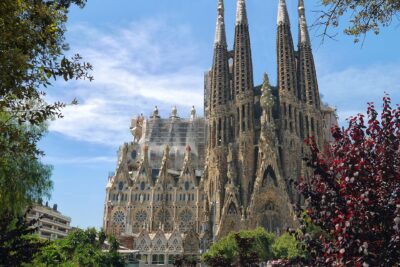
Read more!